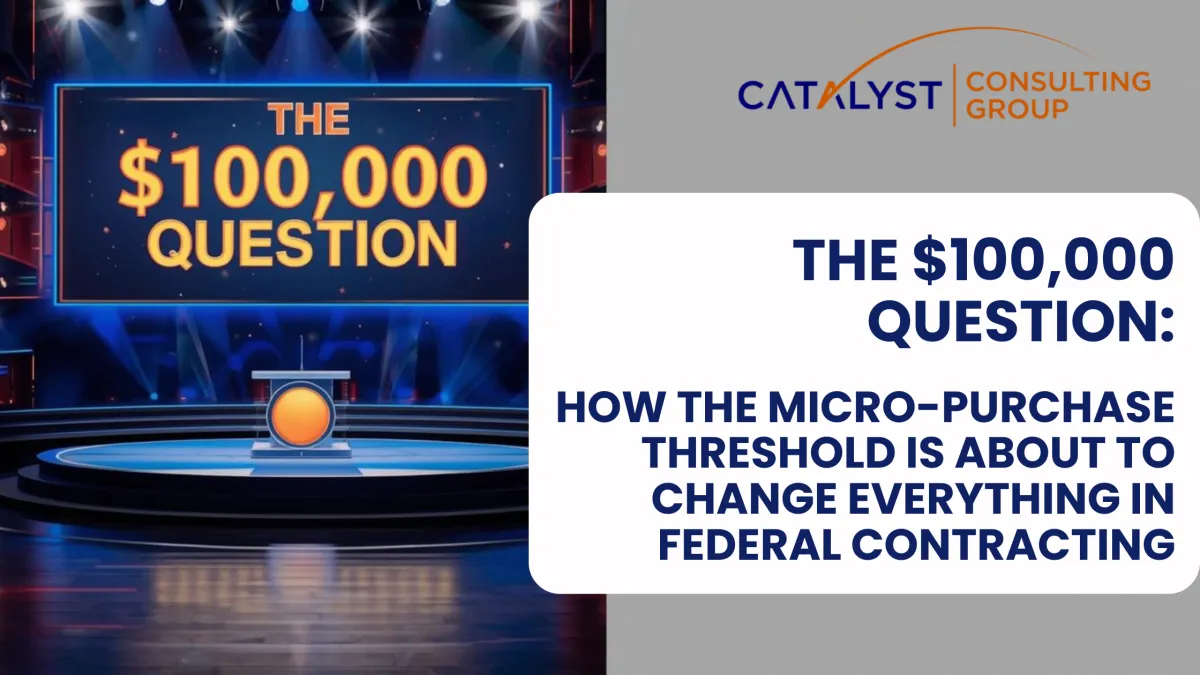The $100,000 Question: How the Micro-Purchase Threshold is About to Change Everything in Federal Contracting
In a recent discussion, our team—led by Michelle Warren and featuring former GSA Chief of Integrated Marketing Robin Zickgraf and Catalyst's Ryan Hay—dove into the monumental, often-overlooked federal Micro-Purchase Threshold (MPT). The MPT dictates the ceiling for simplified acquisition, allowing government agencies to bypass red tape and make quick, credit card-based purchases. This seemingly small detail has an enormous impact: "There are over 500,000 transactions annually that are done under this micro-purchase threshold”, accounting for "$18 billion in annual federal spending" (Michelle Warren). For the furniture industry alone, Michelle estimates that "$240 million in furniture today" is done under these guidelines, a number poised to grow significantly.
Expanding Opportunities: Selling to the Non-Profit Market Through Cooperative Contracts
This month, special guest Corey Imhoff with OMNIA Partners joined us as we dove into a critical topic for expanding your sales: selling to the non-profit market using cooperative contracts. Many organizations in this space operate on tight budgets and with lean teams, making them a prime audience for the efficiency and savings offered by cooperative contracts. Understanding the Non-Profit Market It's important to differentiate between non-profit and not-for-profit. While both do not distribute profits to owners, their missions and structures differ. Non-profit organizations serve the public good. They include charities, educational institutions, religious groups, and hospitals. Revenue earned is reinvested directly into their mission. Non-profits can have paid staff and often have tax-exempt status under the IRS 501(c)(3) code, allowing them to accept tax-deductible donations.


